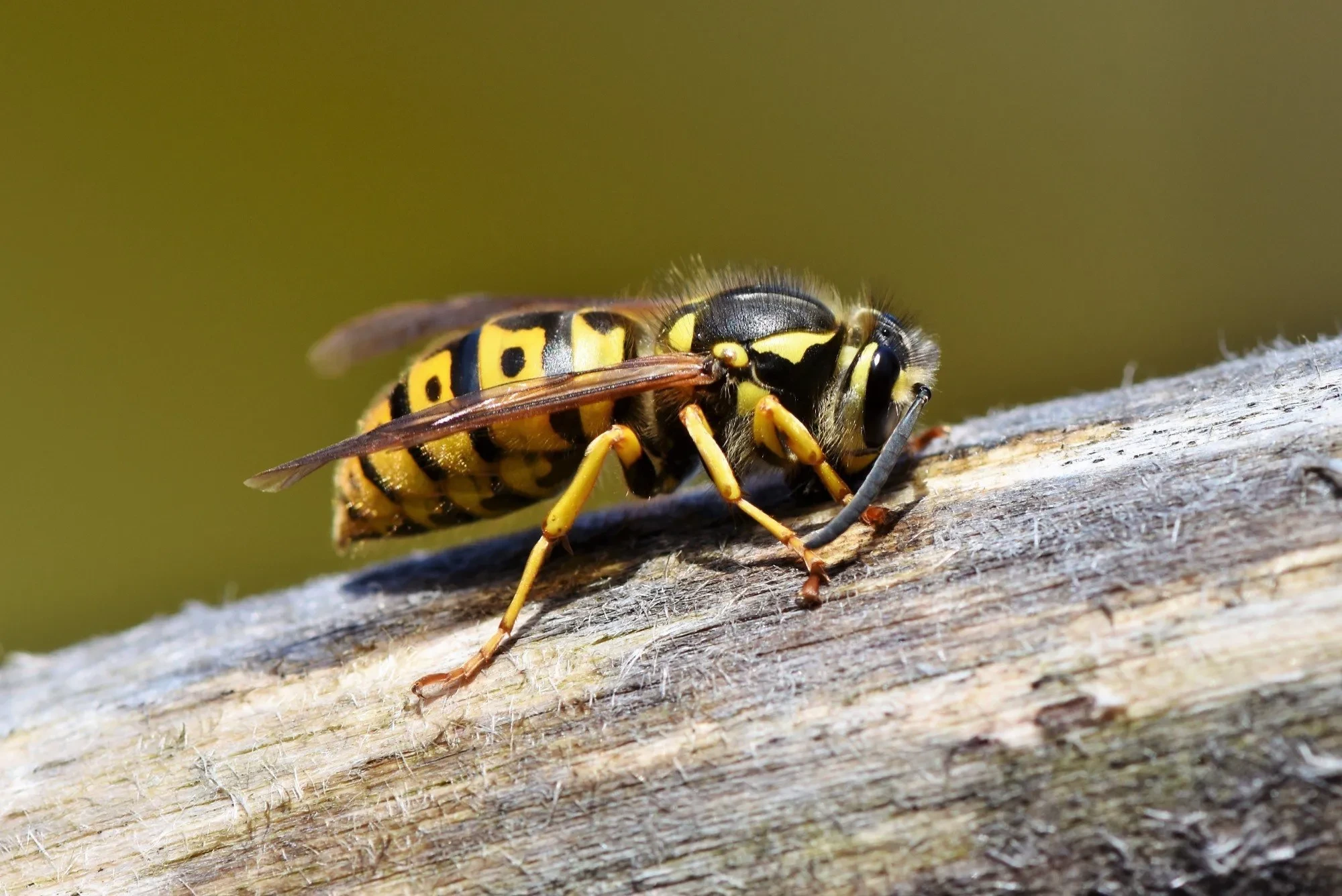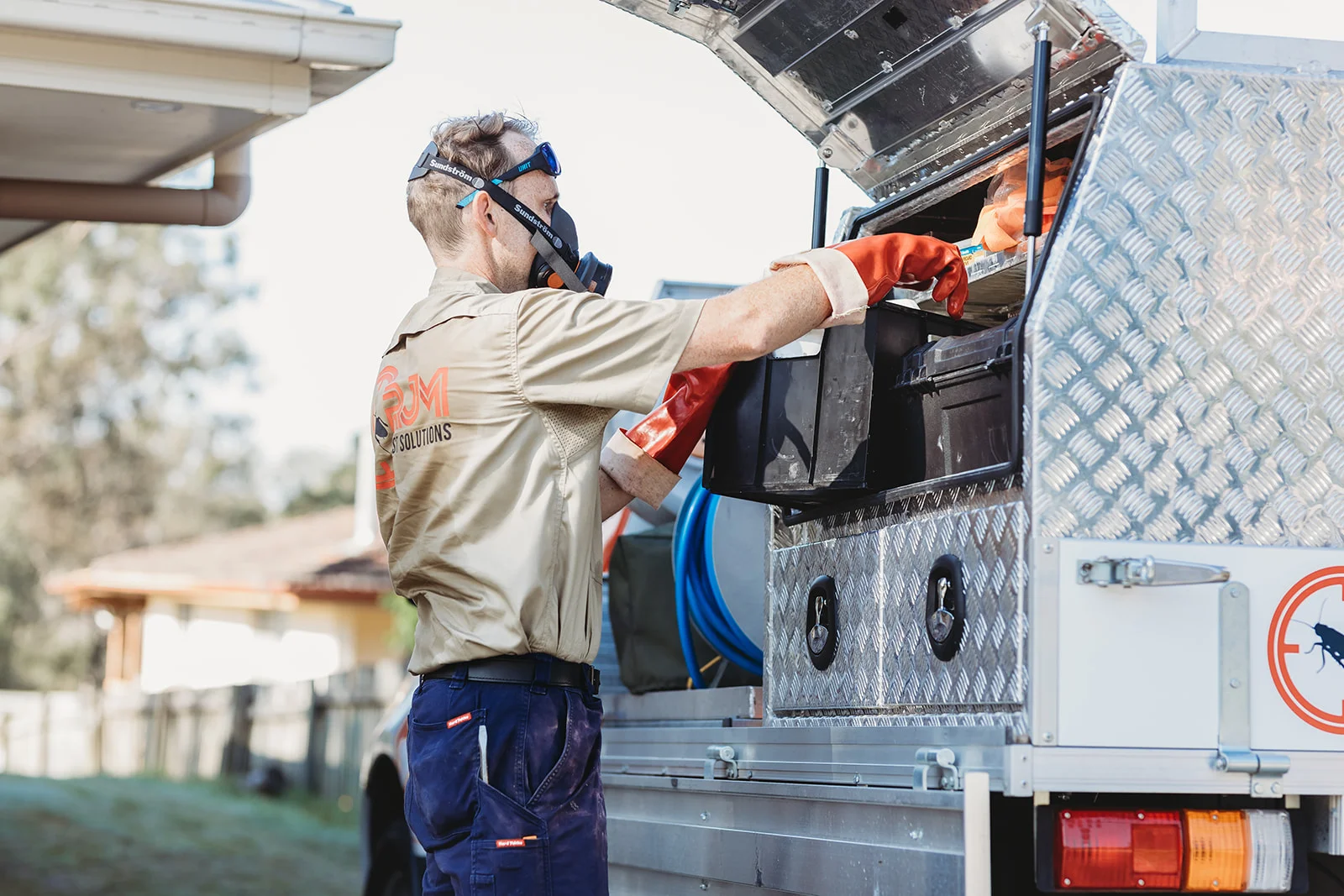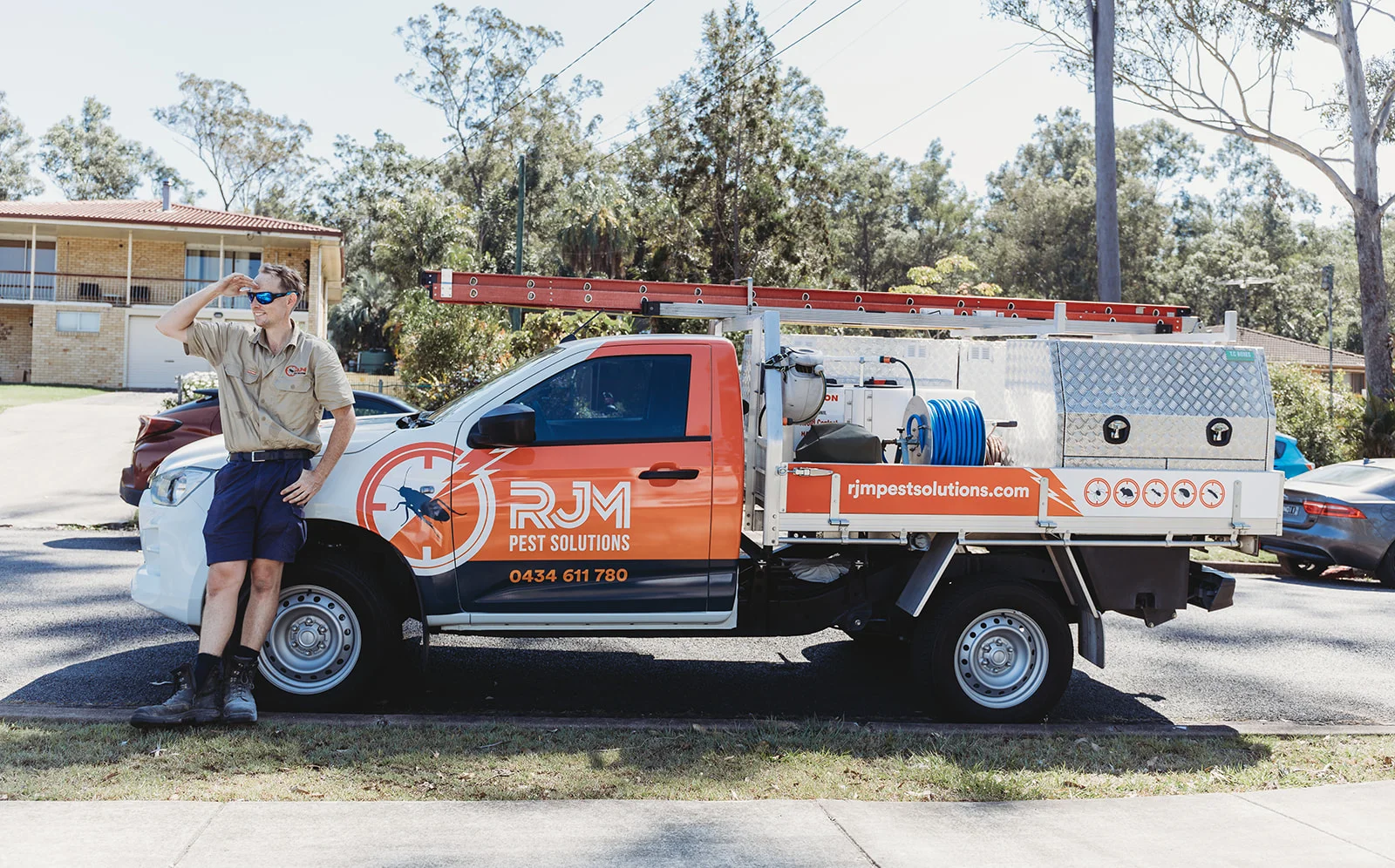Bee Pest Control
Bees are important to the environment, but when they start building hives around your home, they can quickly become a serious safety concern.
While most bees aren’t aggressive by nature, their stings can be painful and even life-threatening for people with allergies.
That’s why professional residential pest control is essential when bees settle too close for comfort. Safe removal protects your family and the bees too.
Why Bees Invade Homes and Why You Should Act Fast
Bees look for warm, sheltered spaces to build hives and raise their colony. Roof cavities, wall voids, garden sheds, and tree hollows are all ideal spots. Once a hive is established, the colony grows rapidly and may become defensive if disturbed.
Fast, professional action is important to:
- Prevent stings, especially for children and pets
- Avoid triggering allergic reactions
- Stop hives from growing too large or spreading to new locations
- Reduce structural damage to walls or roofs caused by nesting
Bee issues are best managed early, before the colony grows and the risks increase.
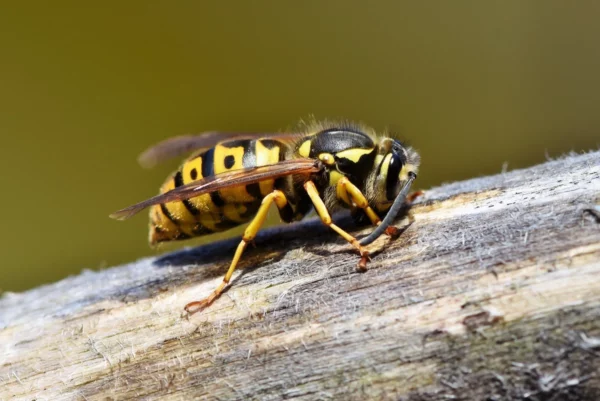
Common Types of Bees
There are several bee species commonly found around residential areas. Understanding the differences between them is crucial for choosing the safest and most effective method of removal or relocation. Each species has unique behaviours, nesting habits, and levels of aggression.
European Honey Bee
European honey bees (Apis mellifera) are the most familiar type of bee in both urban and rural areas. Known for their role in pollination and honey production, they live in large, social colonies with tens of thousands of members.
They often build hives:
- In roof cavities, wall voids, tree hollows, and chimneys
- Using wax combs to store honey and raise their young
- In sheltered, warm areas protected from the elements
Although usually non-aggressive, they can become defensive and sting repeatedly if their hive is disturbed. In homes, their hives can cause structural damage, leaks, and attract pests like ants and wax moths. If left untreated, the growing hive can become a serious safety risk.
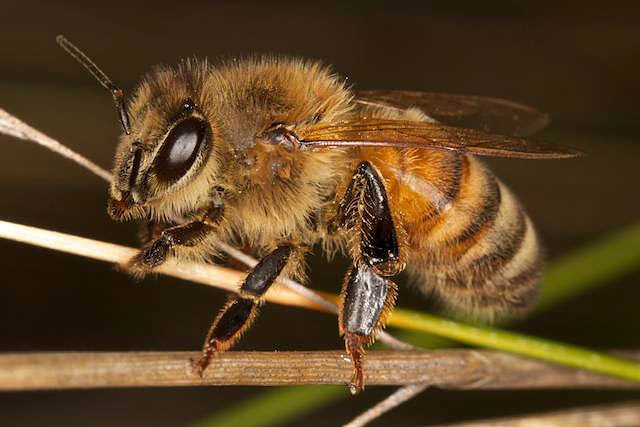
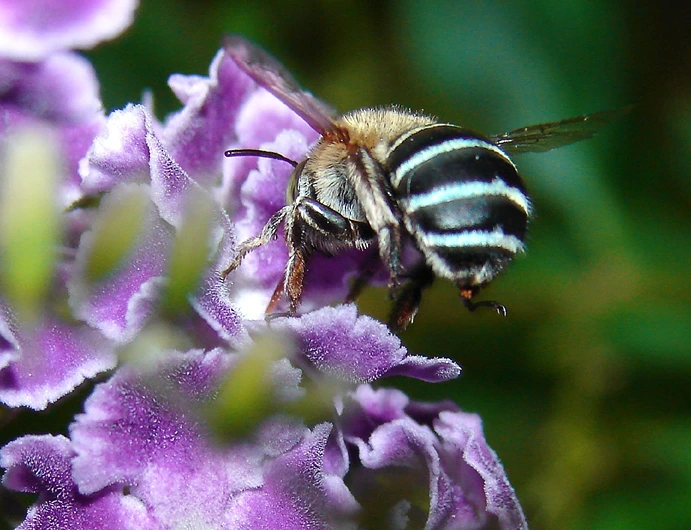
Native Australian Bees
Australia is home to over 1,700 species of native bees. Most of these are solitary, meaning they don’t form large colonies. Many native bees are stingless (such as Tetragonula and Austroplebeia species), making them harmless and ideal for backyard pollination.
Key characteristics include:
- Nesting in small cavities like tree branches, bamboo, or wall gaps
- Pollinating native plants and crops, especially in gardens
- Little to no risk of aggression or stings
While native bees are generally beneficial, if they nest too close to doorways, window frames, or within wall cavities, relocation may be needed, especially if residents have allergies or the nest creates access issues. It’s important to preserve and relocate them safely, often with the help of local beekeepers or specialists.
Carpenter Bees
Carpenter bees (Xylocopa species) are large, robust bees that resemble bumblebees but behave very differently. Unlike other species, carpenter bees do not build hives or wax combs. Instead, they bore perfectly round holes into untreated or weathered wood to lay their eggs.
Common nesting areas include:
- Outdoor timber furniture
- Decks, pergolas, eaves, or wooden fencing
- Exposed beams and weatherboards
They’re usually non-aggressive and rarely sting unless handled directly. However, over time their tunnelling can weaken wooden structures, creating entry points for moisture, rot, and other insects. Multiple generations may reuse the same tunnels, compounding the damage over the years.
Each bee species behaves differently and presents unique challenges. While some may pose little harm and can be left alone or relocated, others may require urgent professional attention due to health or structural risks. Proper identification by a qualified technician ensures the safest and most environmentally responsible outcome.
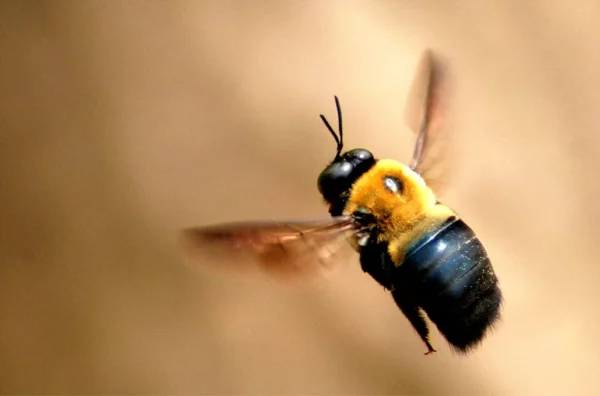
How to Identify Bees in or Around Your Home
Bees are active during daylight hours and are easy to spot when a colony is nearby. Look for:
- A consistent stream of bees entering or exiting the same hole or cavity
- Buzzing sounds coming from inside walls, chimneys, or tree trunks
- Visible honeycomb or wax near eaves, ceilings, or outdoor structures
- Bee activity in garden sheds, roof corners, or hollow trees
If you notice more than a few bees regularly in one area, it may be the sign of an active hive.
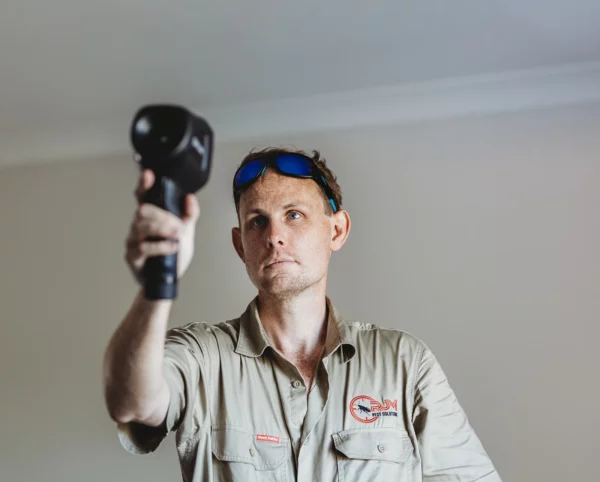
Unlike the occasional bee in your garden, a true infestation involves a colony living on or inside your property. Signs include:
- A high volume of bees in a single area, especially near an entry point
- Stinging incidents without provocation
- Sticky substances or stains on walls or ceilings from honey
- Constant buzzing or humming in a particular part of the house
- Physical signs of a hive in trees, ceilings, or outbuildings
These indicators suggest that the hive is active and growing. Professional removal is recommended as soon as possible.
To avoid unwanted hives on your property, follow these practical prevention tips:
- Seal gaps or holes in walls, roofing, and brickwork
- Remove old tree stumps or hollow logs near your home
- Limit access to wall cavities and roof spaces
- Inspect outdoor furniture, sheds, and garages regularly
- Avoid leaving sugary drinks or food scraps outside
Preventing bees from nesting in the first place is easier and safer than relocating an established hive.
Effective Bee Control and Removal
Bees must be handled with care. Killing a hive is often unnecessary and may be illegal in some regions due to their environmental value. A proper pest control service will include:
- A thorough inspection to locate the hive and assess risk
- Identification of the bee species and nesting site
- Safe, humane relocation of the colony where possible
- Sealing off access points to prevent future nesting
- Advice on ongoing bee-proofing for your home
Professionals use non-lethal methods wherever possible and work with local beekeepers when relocation is the best option.
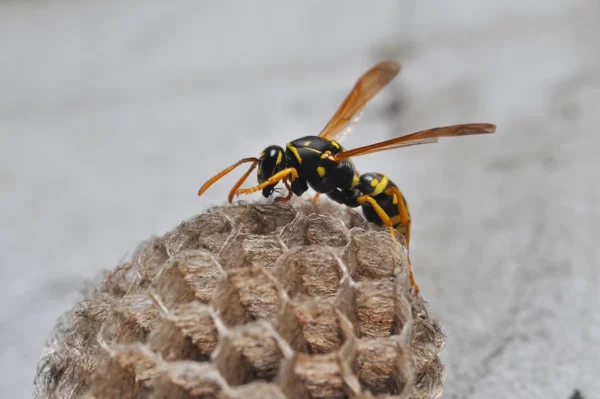
Trying to deal with bees yourself can lead to serious injuries. Swarms become aggressive when threatened, and untrained handling risks harming both people and the bees.
A licensed pest control expert offers:
- Accurate identification of bee type and nest location
- The right tools and safety equipment to manage the situation
- Legal and environmentally responsible relocation practices
- Guidance on how to prevent future hives
When bees nest too close to home, expert support ensures a safe outcome for everyone.
If you’ve noticed a swarm, a hive, or an increase in bee activity near your home, don’t wait for it to become dangerous. Early intervention makes removal easier and safer.
Book a professional pest control service today to protect your home, your family, and the environment.
Call now for a safe and responsible bee removal solution you can trust.








